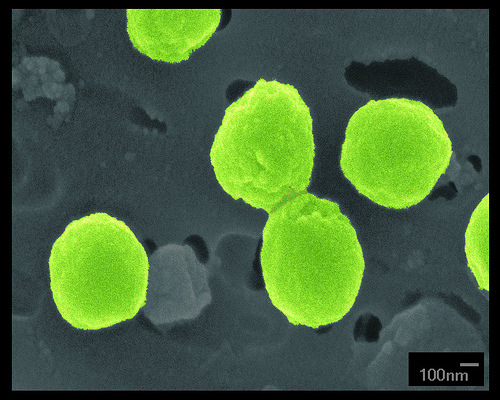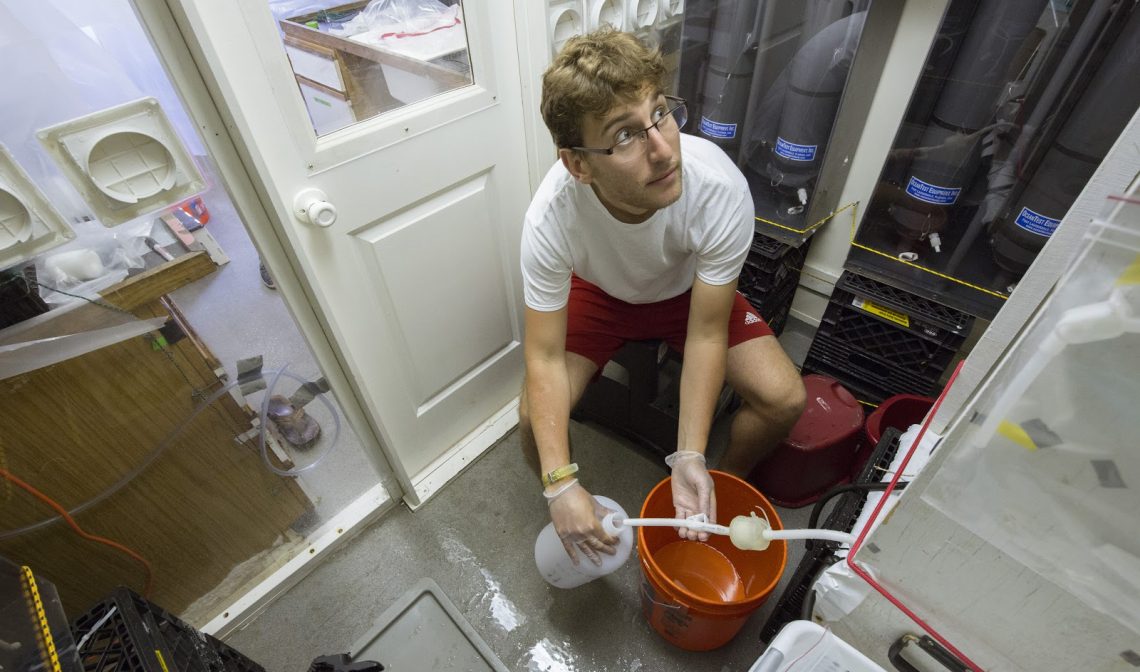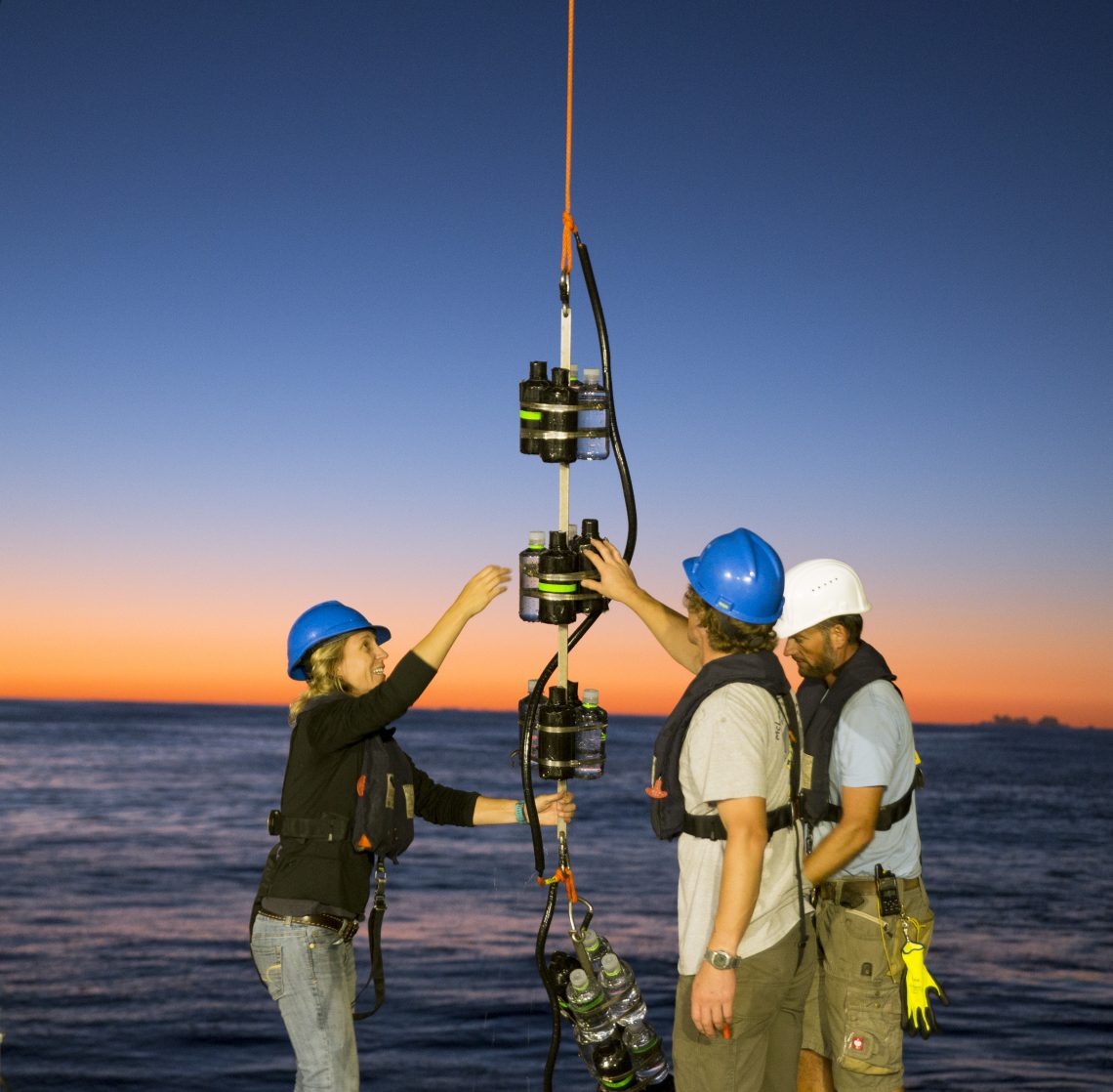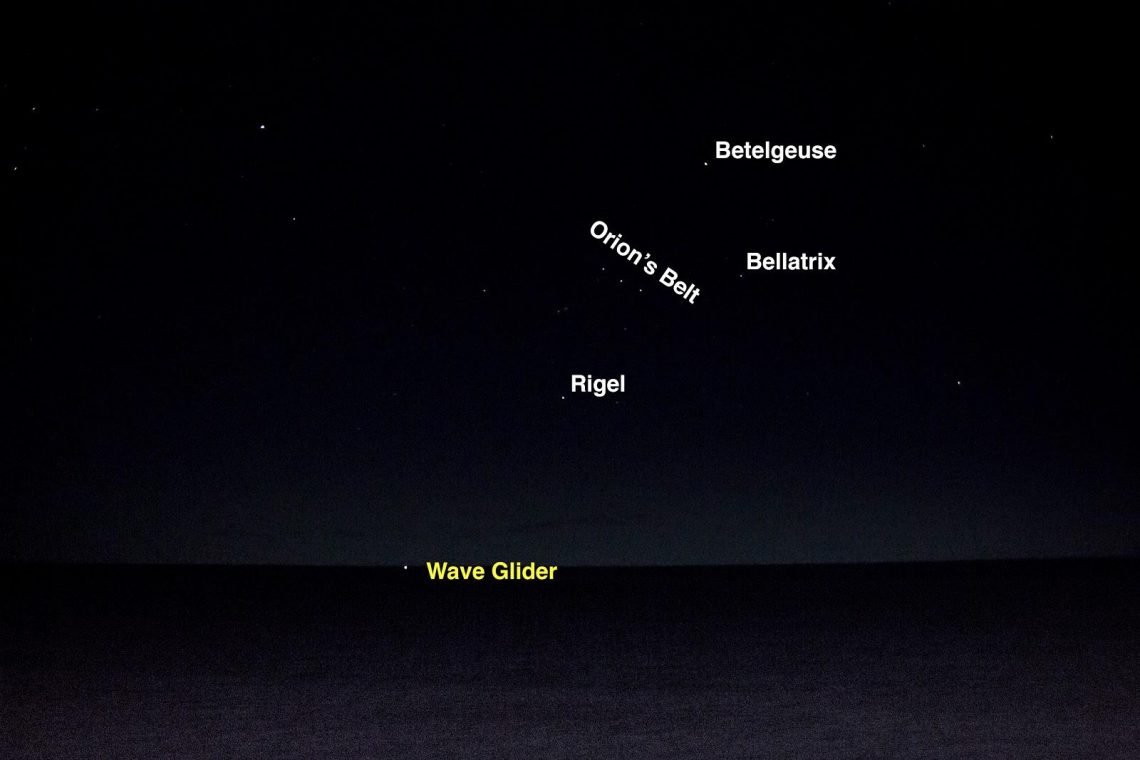It is midnight, and the ship’s lights are dimmed to limit interference with some extremely light-sensitive instruments. Fernanda Henderikx and Mathilde Dugenne lower an optical float into the water with the moon as their main illumination source. It is an unusually beautiful scene to be conducting experiments in.
Many microbes have diel rhythms, just like ourselves, and depend on energy from the sun. Even microbes that rely on sunlight can still survive in the relative dark 80-120 meters below the ocean surface, in a niché microbial habitat called the Deep Chlorophyll Maximum (DCM). At these depths, most of the sunlight from the surface has gone, but the DCM-inhabiting microbes boost their intracellular concentrations of light-harvesting pigments to absorb the few remaining photons. This persistence to utilize the last few drops of light energy is a metabolic characteristic seen in the microbial group called Prochlorococcus. Prochlorococcus is one of the most abundant photosynthetic organisms on Earth, so it is amazing that this important microbe was only discovered by science in 1992. There is still so much we do not know about microbes in the ocean.

Trading Light for Food
The DCM niché habitat also marks the beginning of an increase in dissolved nutrient concentrations with depth. The photosynthetic microbes at the DCM have greater access to nutrients required for cellular growth compared to the nutrient-starved surface waters. In a cyclonic eddy like the one we are in, this niché habitat (and the community of microorganisms that thrives in it) gets pushed higher up in the water column where there is more light. The movement might not appear to be dramatic, but an upward shift by 20-30 m is sufficient to change the ambient light levels from 0.1% up to 2%. The combination of nutrient availability with increased light boosts the rate of photosynthesis and results in higher rates of carbon fixation in the lower part of the sunlit waters. Quantifying the changes in carbon fixation in this giant ecosystem is important to understand, but it is not easy to study.
This eddy provides us with a fantastic natural laboratory, and the second leg of this cruise has been making the most of it, sampling and conducting experiments at a frantic pace. Sometimes we have more than 10 different experiments going on at the same time in the centre of the eddy; understanding the diel rhythms of microbes at depth takes a lot of creativity and hard work.
 The online tracking tool shows the real time position of our suite of instruments, all drifting around in the center of the eddy.
The online tracking tool shows the real time position of our suite of instruments, all drifting around in the center of the eddy.
Small Scale, Big Ocean
For example, some scientists onboard are looking at trace metals to understand how iron levels in this area of the ocean influence microbial productivity. But it is difficult to study minute concentrations of trace metals when you are working on a giant iron research vessel. SCOPE postdoctoral researcher Nick Hawco, from the University of Southern California, shuts himself behind plastic sheets inside a tiny sealed bubble on the top deck. A harsh way to spend a long day in Hawaiʻi, but every trace of metal is important.

Kevin Becker, a SCOPE postdoctoral researcher from Woods Hole Oceanographic Institute, is looking at lipids in microbial cells. Lipid molecules are a key connection between what goes on inside a cell and changing environment that surrounds it. To study how these lipids work, Kevin collects water off the CTD Rosette to set up his experiment, and then puts the water into bottles that are lowered back into the ocean for ~12-hours, dawn to dusk, to incubate in their natural habitat. Half of the bottles are transparent, allowing for sun to penetrate through and the other half are dark so no light is allowed inside.

Time and Tide (and Tiny Things) Wait For No Man
Many of the scientists doing diel experiments are looking for answers on how marine microbial organisms respond to the rhythms of day and night at sea. This means operations, deployments, recoveries, and processing are happening constantly. “We have an idea that the uncultivated bacterium ‘UCYN-A’ fixes nitrogen only during the day time, but you can not test this by only taking a couple of samples,” says Rosie Gradoville. Rosie and Ana Maria Cabello, SCOPE postdoctoral researchers from the University of California, Santa Cruz, must sample every three hours. As Rosie says “We are disrupting our own diel rhythms in an attempt to understand those of the microbes.”
At night on a ship, our eyes are always drawn to the stunning skies. On this trip we can also look ahead and see some extra little ‘stars’ on the horizon – glowing tracking beacons floating in the distance. These bright dots mark either the robots who keep us in contact with the autonomous samplers down below, or the location of the experiments we will collect in the morning. We can not see what they are doing in the deep waters, but each recovery of data and samples brings a little more light to our understanding of the ocean.


